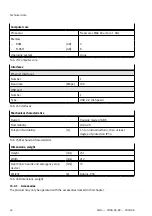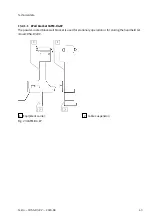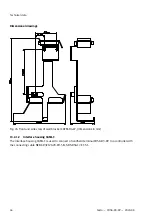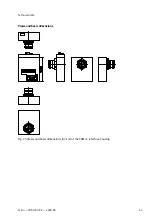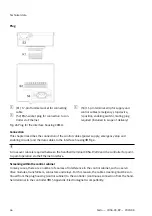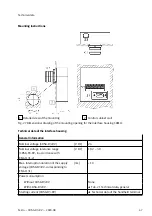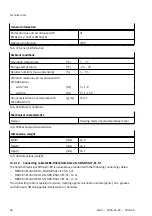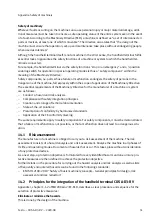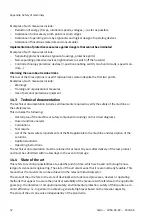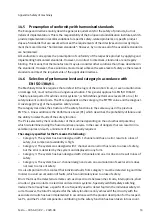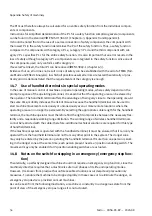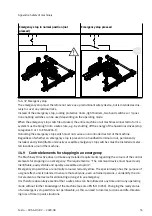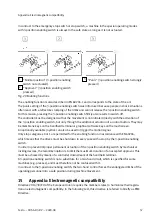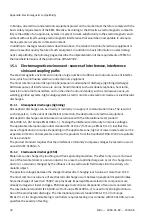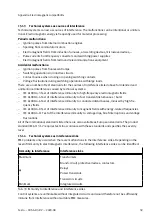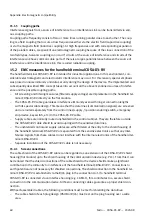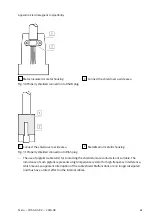
It is therefore absolutely essential that a safe status can be initiated at any time and in any operating
mode without further knowledge of the machine (see also EN ISO 13850). Changing the ready status
of an emergency stop switch is not permissible, as this can lead to incorrect actions and life-threaten-
ing loss of time in panic situations.
Permanently installed handheld terminals: emergency stop switch
They are equipped with a cable which is used to connect the handheld terminal to the defined
machine. The handheld terminal is usually connected to the machine or unplugged when the machine
is switched off. This occurs during the installation or uninstallation process. The handheld terminals
are not intended to be connected or disconnected during operation of the machine.
For many simple machines, the handheld terminal is also the only operating option, so the machine
cannot be commissioned without a handheld terminal. However, if the plug is removed from the
machine during operation, the emergency stop lines are interrupted and the emergency stop function
of the machine is activated, causing the machine to stop.
If a handheld terminal of a machine is to be uninstalled and not immediately reinstalled, the device
must be locked away to avoid confusion with a functioning handheld terminal. The machine can only
be restarted when a new handheld terminal is installed. This must be described in the operating
instructions of the machine and is the responsibility of the operator. Due to the fact that plugging in
and unplugging are very rare and the machine is out of operation in the unplugged state, the risk of
accidents due to an emergency stop switch that is not ready for operation is considered very low and
use of the red-yellow identification is permissible.
The red-yellow emergency stop switch must always be connected to the emergency stop circuit of the
machine and must switch off the power to the machine or all machines connected to one system (stop
categories 0 or 1 to EN 60204-1).
WARNING!
Missing emergency stop on the machine.
Failure to perform an emergency stop on the machine can result in serious injuries or the death of
people involved.
•
At least one emergency stop device must always be hard-wired to the machine, even if emergency
stop devices are installed on plug-in or wireless operator stations (e.g. portable programming
devices).
14.10 Notes on the 3-position enabling switch
Many machines have normal operation and special operation operating modes. In normal operation or
automatic operation, the machine fulfils its mission. Safety is guaranteed in this operating mode via
closed, separating protective devices, with functioning, non-separating protective devices or both
types of protective devices in combination. The special operating modes of a machine are used to
maintain normal operation. In this case, safety must be guaranteed in a different way from normal
operation, because danger zones of the machine can now be entered and targeted movements must
be possible. The 3-position enabling switch plays a key role here.
A prerequisite for the application is that the hazard to be controlled is switched off in good time by a
3-position enabling switch before personal injury occurs. This may require additional safety measures,
such as a safely reduced speed of drives.
Appendix: Safety of machinery
56
Festo — CDSA-D3-RV — 2020-08

